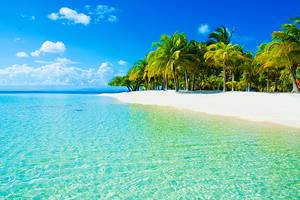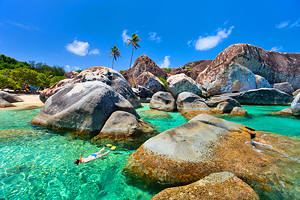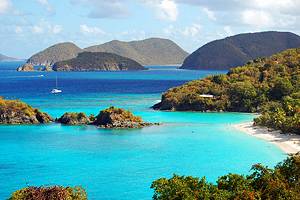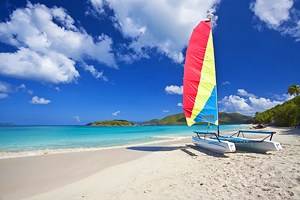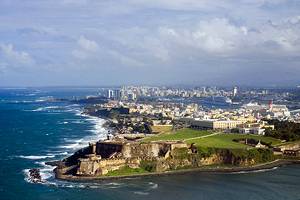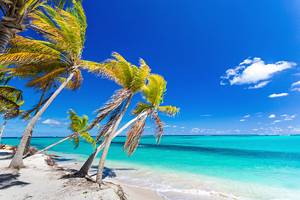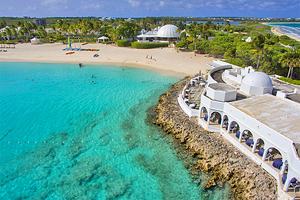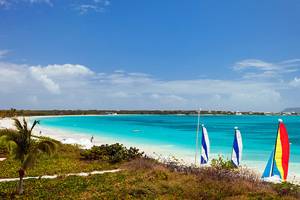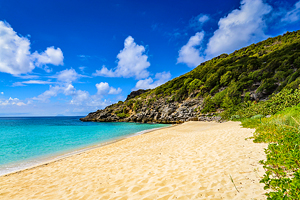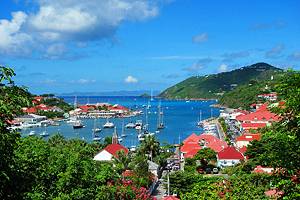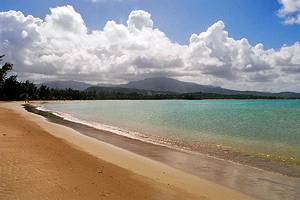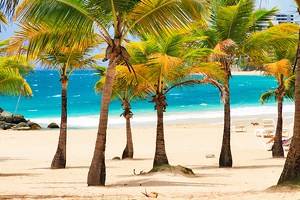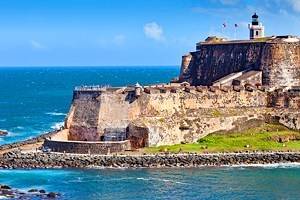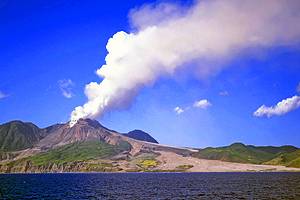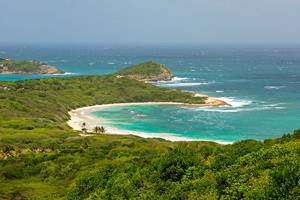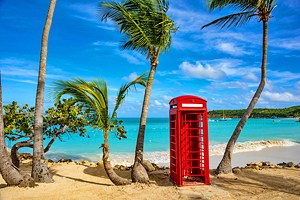Tourist Attractions in the British Virgin Islands
Ravishingly beautiful, the British Virgin Islands (BVI) encompass more than 60 islands, scattered like emeralds between the Caribbean Sea and the North Atlantic. In 1666, British planters took over the islands from the original Dutch settlers, and they attained the status of a British colony. Today, the BVI remain a Territory under the British Crown and are world-renowned for their excellent sailing and yachting, many dive sites, dazzling beaches, and other tropical attractions.
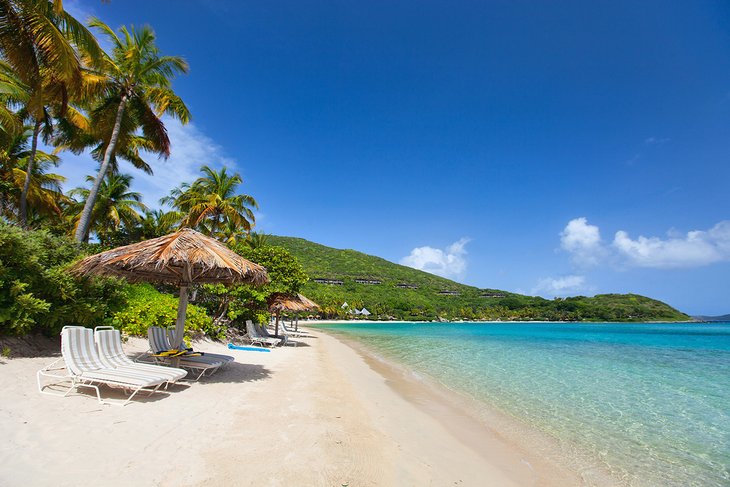
The principal islands are Tortola, Virgin Gorda, Anegada, and Jost Van Dyke. Home to the capital city of Road Town, Tortola is the most populated of the islands and a gateway to the archipelago. You'll find many of the larger British Virgin Islands' resorts here.
Except for Anegada, all these islands are volcanic, with dramatic landscapes of lush peaks plunging to crystal-clear bays. Anegada, a fishing hot spot, is almost completely flat. It's comprised of coral and limestone, with spectacular stretches of white-sand beach.
Virgin Gorda and Jost Van Dyke lure discerning nature lovers and boaters seeking a more secluded island experience. All the islands are ideal for diving, snorkeling, and sunbathing, including the many smaller "Out Islands" of the BVI. Deep sea fishing, bonefishing, and reef fishing are also popular things to do.
For more ideas on the best places to visit in these stunning islands, read our list of the top attractions in the British Virgin Islands.
- The Baths National Park, Virgin Gorda
- Gorda Peak National Park, Virgin Gorda
- North Sound, Virgin Gorda
- White Bay, Jost Van Dyke
- Smuggler's Cove Beach, Tortola
- Anegada Island
- Cane Garden Bay, Tortola
- Soper's Hole, Tortola
- Road Town, Tortola
- Rhone National Maritime Park & RMS Rhone Shipwreck Dives
- Sage Mountain National Park, Tortola
- Sandy Cay
- Norman Island
- Peter Island
- More Must-See Islands near the British Virgin Islands
The Baths National Park, Virgin Gorda
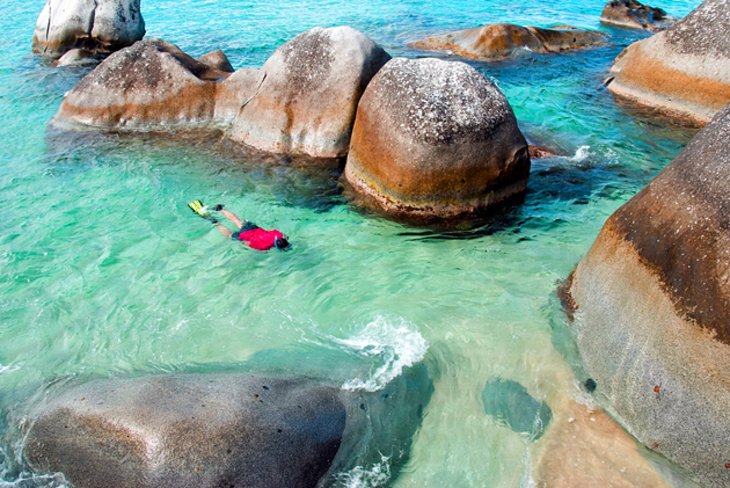
The Virgin Gorda Baths are a busy anchorage and one of the British Virgin Islands' most famous landmarks. This distinctive bay is scattered with giant granite boulders, creating sea pools and grottoes that are perfect for snorkeling and exploring.
At one point, the boulders form a sand-bottomed cave that is one of the most beautiful places to photograph in the British Virgin Islands. The Baths were declared a national park in 1990 in an effort to preserve this beautiful boulder-strewn bay.
Gorda Peak National Park, Virgin Gorda
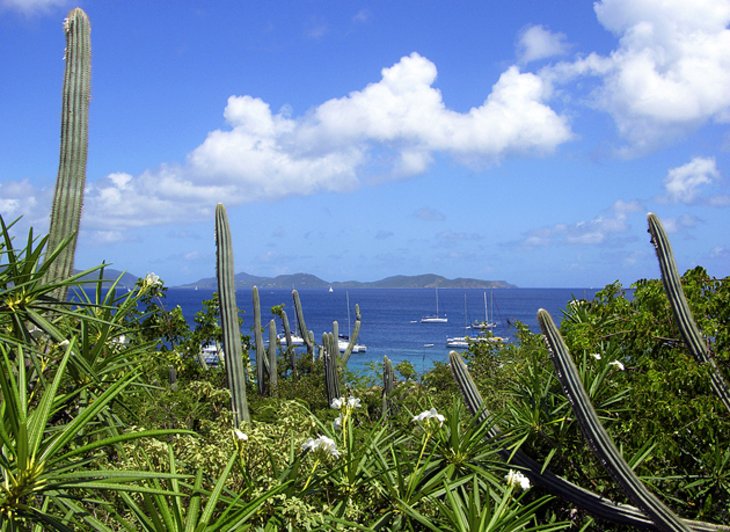
If you're looking for a change of pace from all the aquatic activities, Gorda Peak National Park is a great place to visit for some land-based nature. It's also one of the most beautiful spots in the British Virgin Islands for photography.
Two well-marked hiking trails lead to the summit of Gorda Peak, the island's highest point. From the observation tower here, you can enjoy sweeping views of the North Sound, Anegada, and the other islets and cays of the British Virgin Islands.
Rich in biodiversity, the park comprises 107 hectares of semi-rainforest, with dry forest cloaking its upper slopes and rare plants flourishing within its borders, including six species of native orchids.
Wildlife such as reptiles; tree frogs; birds; bats; soldier crabs; and the world's smallest lizard, the Virgin Gorda gecko, are also found in the park.
North Sound, Virgin Gorda
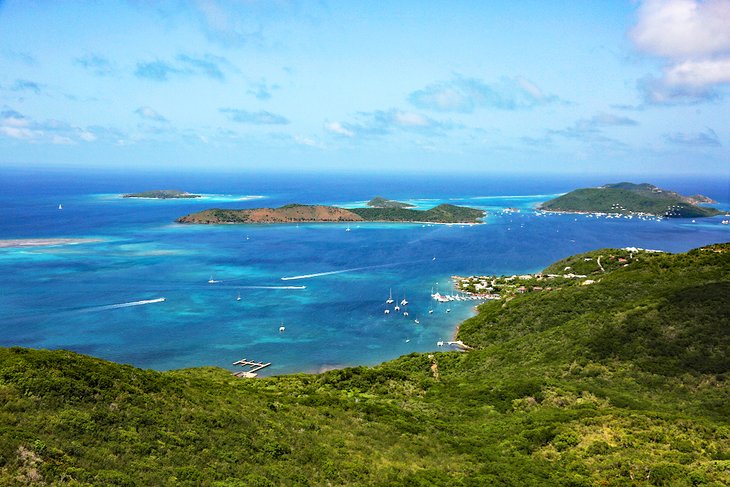
The North Sound, on the northeast shore of Virgin Gorda, is a major water sports center in the British Virgin Islands. The area offers well-protected waters and many anchorages, with every kind of boat and water activity available: diving, sailing, windsurfing, parasailing, jet skiing, water-skiing, glass bottom boats, and trips to secluded beaches.
North Sound is also home to several small islands, including Prickly Pear, Eustatia, Necker, and Moskito Islands. The uninhabited Prickly Pear Island hosts one small beachside restaurant and a beautiful national park that offers a good hiking trail with unique local flora.
Snorkelers will appreciate the abundance of coral reefs. These include a large area off the eastern coast of Moskito Island, a well-protected reef system surrounding southeastern Necker Island, and a long stretch that extends from Prickly Pear Island to the easternmost tip of Virgin Gorda.
Since the channel and surrounding areas can only be reached by boat, the North Sound is extremely popular with boaters and private charters. Those without their own watercraft will find many options for rentals and locally operated boat tours.
White Bay, Jost Van Dyke
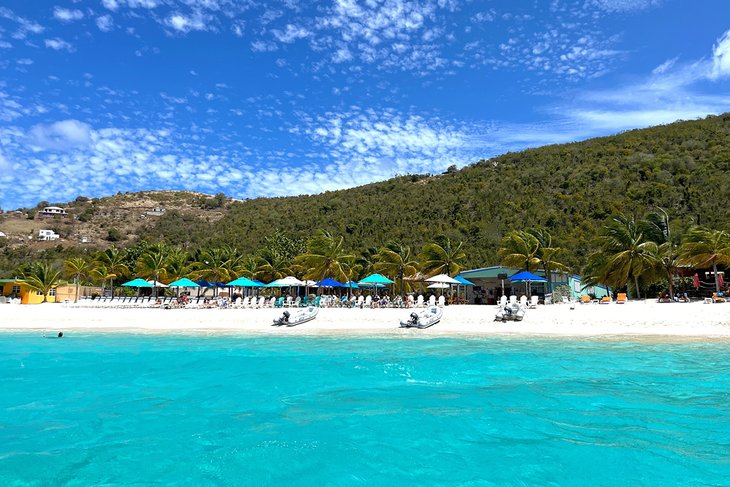
White Bay is Jost Van Dyke's most popular beach and one of the most beautiful beaches in all the British Virgin Islands. Steep hills plunge to this long sweep of dazzling white sand, which is sheltered by a barrier reef. The reef protects the waters from waves and swells, and creates excellent swimming and snorkeling opportunities.
A channel through the center of the reef allows entrance for the many boats that anchor in the clear turquoise waters. After a few hours of sun and sea, you can refuel at one of the convivial restaurants along the beach.
Smuggler's Cove Beach, Tortola
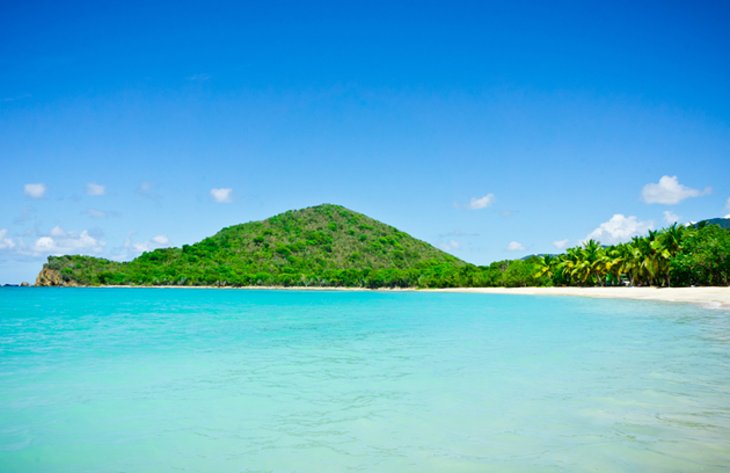
Need an escape from the busy resort scene in Tortola? Smuggler's Cove, at the westernmost end of Tortola, is the perfect getaway.
Secluded, sheltered, and relatively undeveloped, this pretty slice of sun-bleached sand and turquoise sea merges with an undulating emerald-green headland, making for a picturesque backdrop to your aquatic adventures. The clear turquoise waters offer decent snorkeling, with sea turtles swimming just offshore.
You won't find any shops, resorts, or restrooms here, but you can purchase snacks and refreshments at a couple of rustic beach shacks along the shore.
If you're a movie fan, you might be interested to know that The Hollywood remake of The Old Man and the Sea was filmed here in 1990.
Beach access is via a bumpy dirt road, but that adds to the remote feel and keeps the crowds away. If you're looking for low-key things to do in Tortola, visiting this beach should be top on your list.
Anegada Island
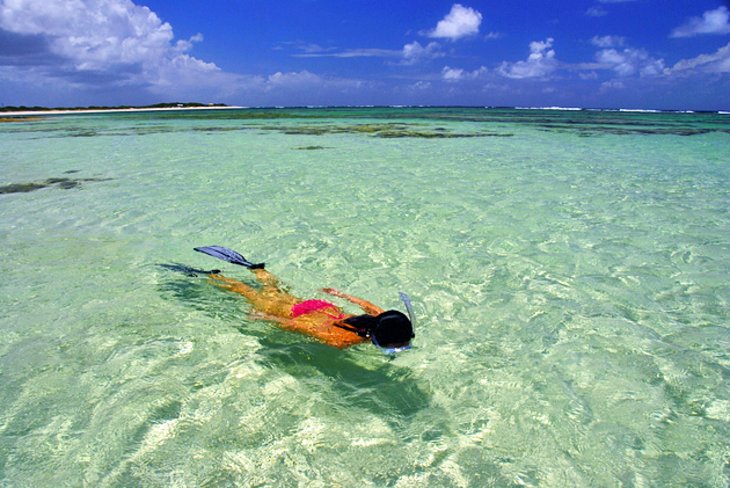
Surrounded by a maze of coral reef that extends for many kilometers off shore, Anegada creates ideal opportunities for reef and bonefishing. The island is protected by Horseshoe Reef, one of the largest reef systems in the world.
Anegada is so low that many mariners cannot see the island until caught in the reef, a fate that has caused more than 300 ships to sink off its coast. In fact, there are more wrecks off Anegada than anywhere else in the Caribbean. Now playing host to an array of colorful marine life, some of these wrecks are favorite dive sites.
The BVI National Parks Trust protects almost the entire interior of the island from development, making this a popular destination for adventure travelers rather than those seeking a resort-type vacation. The landscape of Anegada features salt ponds, blooming cacti, wild orchids, and century plants, as well as some beautiful stretches of white-sand beach - Loblolly Bay and Cow Wreck Bay Beach are favorites.
Wildlife found on the island includes the rare rock iguana, and you can usually spot flamingos and other sea birds at a pond in central Anegada - a viewing platform is set up for visitors.
Cane Garden Bay, Tortola
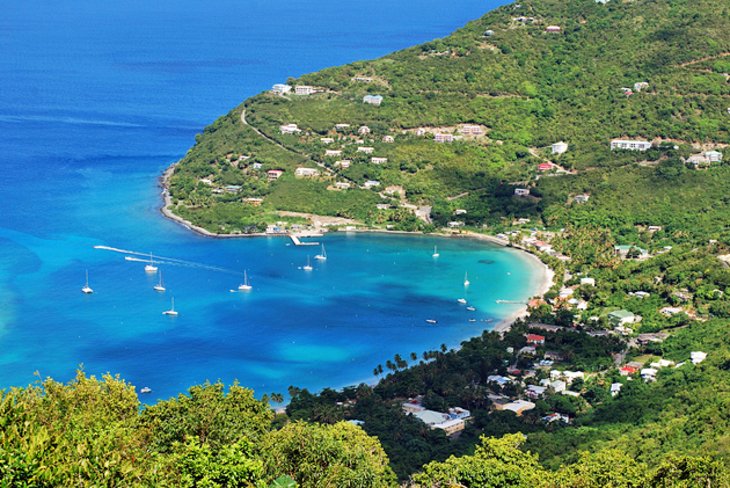
Shaped like a crescent, Cane Garden Bay Beach is Tortola's most popular stretch of sand. Backed by steep green hills, the bay waters are sheltered from winds inside the barrier reef.
Local West Indians, travelers, cruise ship passengers, and sailors congregate on this well-known beach to soak up the sunshine, socialize, and listen to island music during the evenings and weekends.
The beach is a busy anchorage, with numerous opportunities for snorkeling and water sports. But if you just want to bask along the shore, you can rent sun loungers and umbrellas, and you'll find plenty of restaurants along the beach for snacks and refreshments.
If you want a less crowded Cane Garden Bay experience, try to avoid heading here on days when the cruise ships are in port.
Soper's Hole, Tortola
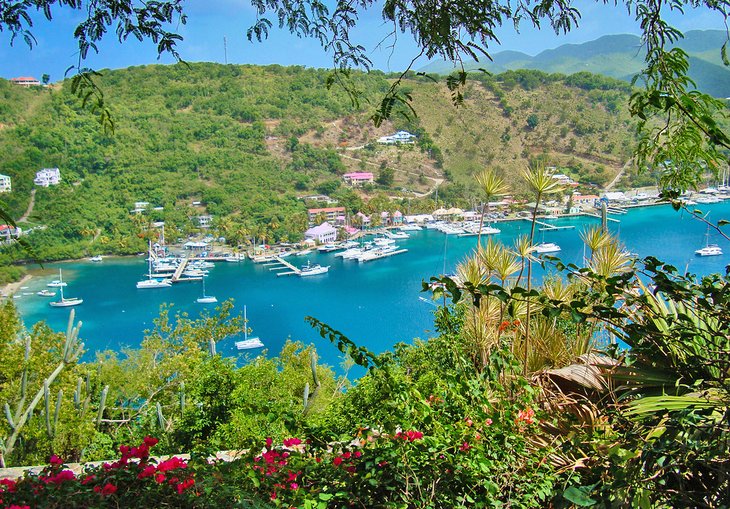
This busy anchorage is where Tortola's first Dutch settlers landed in 1648. Reputed as a former pirate's den, today the harbor is a popular point of entry and a ferry terminal, thanks to the anchorage being deep and sheltered.
Connected by bridge are the residential areas of Frenchman's Cay and the Soper's Hole Marina. In the marina, candy-colored West Indian-style buildings house shops and restaurants, and it's a popular place to buy souvenirs and soak up the cheerful Caribbean vibe.
Road Town, Tortola

The capital of the British Virgin Islands, Road Town is named for Tortola's principal harbor, Road Bay. Located in the center of the southern shore of Tortola, Road Town is the commercial center of the entire British Territory, and the harbor is often crowded with charter yachts, ferries, and the occasional cruise ship.
Most of Road Town's attractive shops and eateries are found on Waterfront Drive and Main Street, with historic forts and sugar mills, some dating back 200 years.
Besides shopping, one of the top things to do in Road Town if you have time on your hands is stroll around the J.R. O'Neal Botanic Gardens. Here, you'll find 4.5 acres of tropical flowers, palms, koi ponds, and fountains.
Rhone National Maritime Park & RMS Rhone Shipwreck Dives
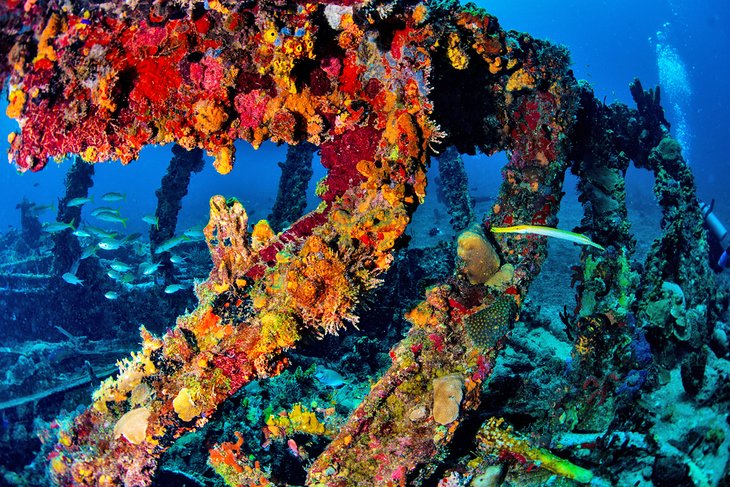
Rhone National Marine Park is the only national marine park in the BVI that owes its existence to a shipwreck.
A hurricane in 1867 caused the Rhone to crash against the rocks off the southwest coast of Salt Island, killing 124 people, while the surviving 23 washed up on Salt Island's shores.
Today, the wreck is one of the best diving sites in the Caribbean for intermediate to advanced divers. You can swim inside the coral-encrusted steel among schools of snapper, grunts, soldierfish, and parrotfish. Moorings are located at Lee Bay on Salt Island, near the wreck.
The marine park also encompasses two coral caves, 26 meters below the sea's surface, as well as Blonde Rock, another prime dive site with overhangs, tunnels, caves, and abundant marine life.
Sage Mountain National Park, Tortola
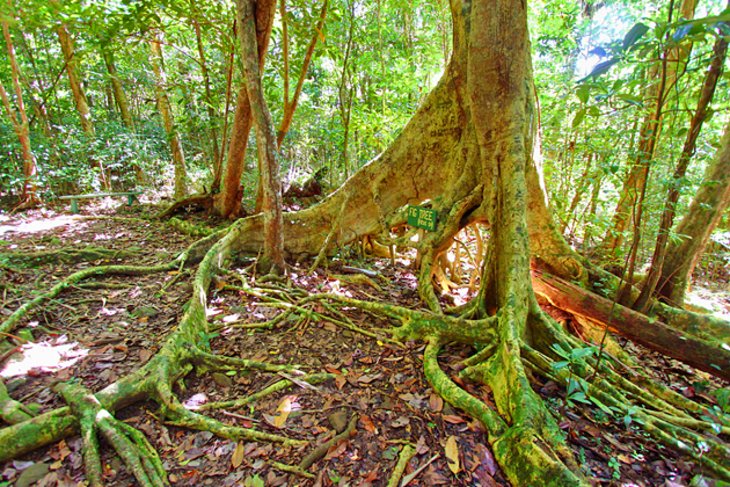
If you need a break from the sun, sand, and sea on Tortola, head to Sage Mountain National Park. A gift from the Rockefellers to the government of the BVI, it cloaks a ridge running east to west along the spine of Tortola and is the first national park established in these islands.
Almost the entire park is 305 meters above sea level, and 523-meter Mount Sage is the highest peak in all the Virgin Islands.
Feel like a hike? Twelve looped trails thread through the forest, and while the park is not an actual rain forest, you can see philodendrons, hanging vines, ferns, mahogany, cedar, and manilkara trees.
Wildlife includes birds such as martins, hummingbirds, and kestrels. Since the BVI National Parks Trust acquired the land, reforestation programs have been successful in many areas of the park.
Sandy Cay
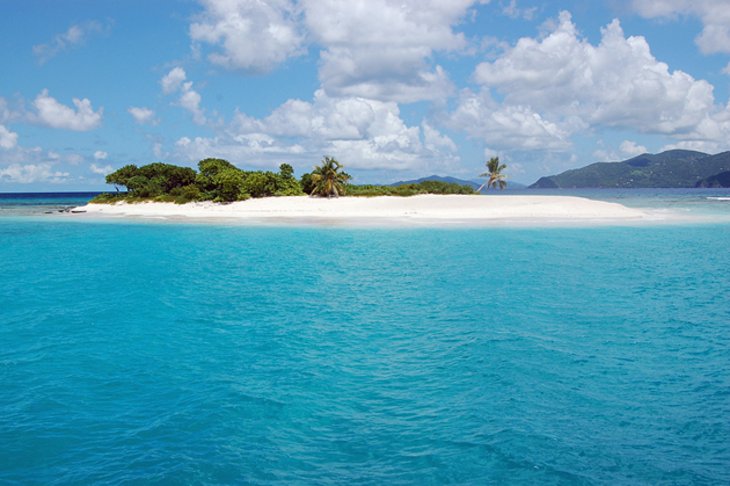
Sandy Cay is the quintessential desert island. Known in the British Virgin Islands as the "all-beach island," this uninhabited islet lies off Little Jost Van Dyke.
The waters here are deep, almost until the shore, and they are excellent for snorkeling and kayaking thanks to the fringing reefs on both the north and south sides of the island. Several mooring buoys make it easy for boaters to come ashore here.
On land, you can hang out with the hermit crabs, enjoy a picnic, and explore the short hiking trails with cliff-side vistas.
Norman Island
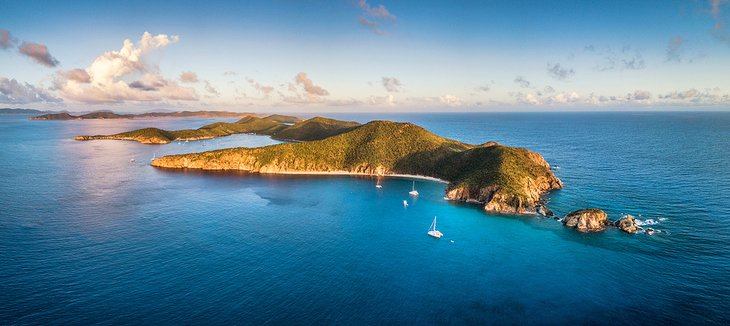
Since 1843, various legends have deemed Norman Island the site of buried treasure. Lying 10 kilometers southwest of Tortola, this is the largest uninhabited island in the British Virgin Islands.
The anchorage at the Bight, known for good snorkeling, is usually crowded with sailboats, swimmers, and dinghies. Apart from the beaches at the Bight and Benures Bay, on the east side of Norman Island, the terrain is mostly undeveloped and impenetrable.
Also of note here are the underwater Treasure Caves, believed to be the place Robert Louis Stevenson had in mind when writing Treasure Island. The four caves offer ideal snorkeling and diving, and one of the caves extends 24 meters under the island, replicating the conditions of a night dive.
Lying 1.6 kilometers south of Norman Island, Santa Monica Rock is one of the prime dive sites in the British Virgin Islands, featuring a pinnacle reaching 30 meters. Since the rock lies on the outer edge of the island chain, it is a good place to spot larger open-ocean fish such as nurse sharks or spotted eagle rays. The BVI National Parks Trust has set up moorings here.
Peter Island

Only 6.5 kilometers south of Road Town, Peter Island is the largest private island in the BVI. The island has a rich history, featuring famous explorers, pirates, and slave traders.
In 1978, a keen sailor purchased it and established the luxury Peter Island Resort & Spa, which is currently closed for renovations after hurricane damage.
Today, the island remains mostly undeveloped but for the shores of Deadman's Bay and Sprat Bay, where the resort and the Peter Island Marina are located.
The island offers excellent diving and snorkeling sites, five beaches, and trails for hiking and biking.
More Must-See Islands near the British Virgin Islands
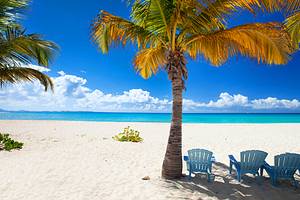
The British Virgin Islands are surrounded by other beguiling Caribbean Islands. To the west is Puerto Rico, with a rich Spanish Caribbean culture. A short hop from the BVIs, the US Virgin Islands offer pretty, palm-lined beaches and excellent opportunities for diving and snorkeling, and Anguilla, to the east, boasts some of the best beaches in the Caribbean.


